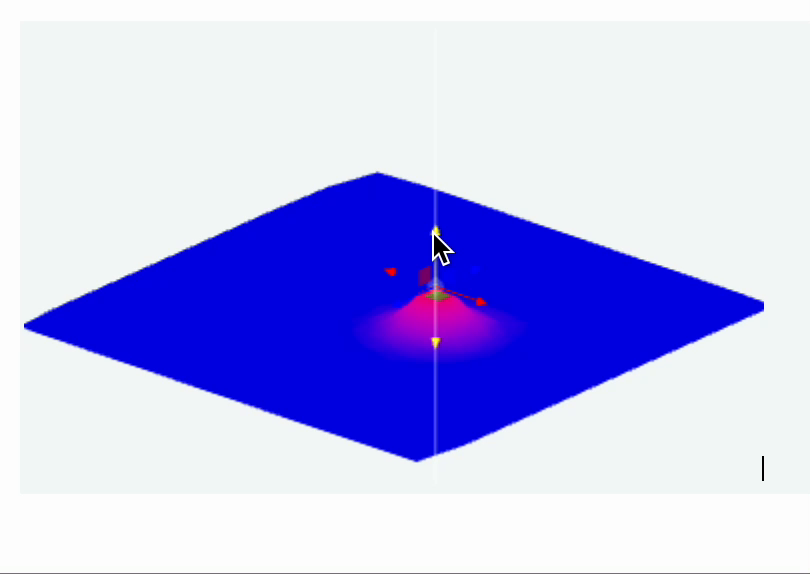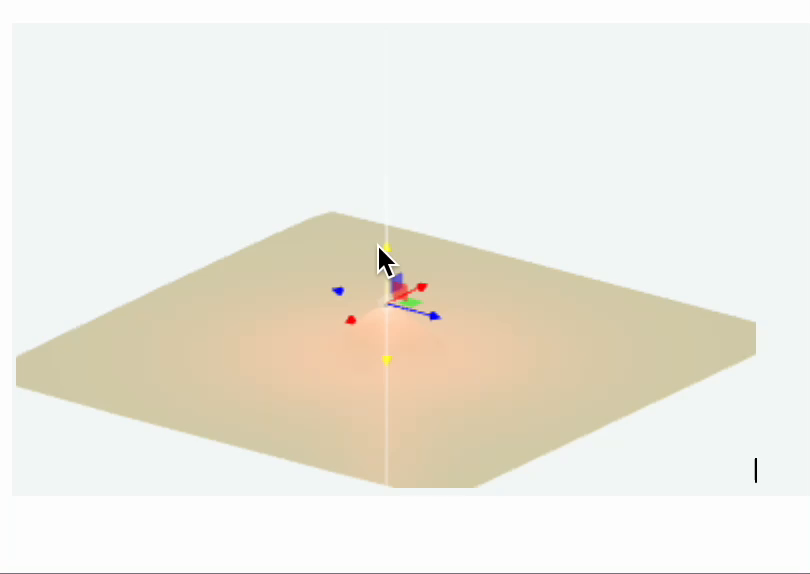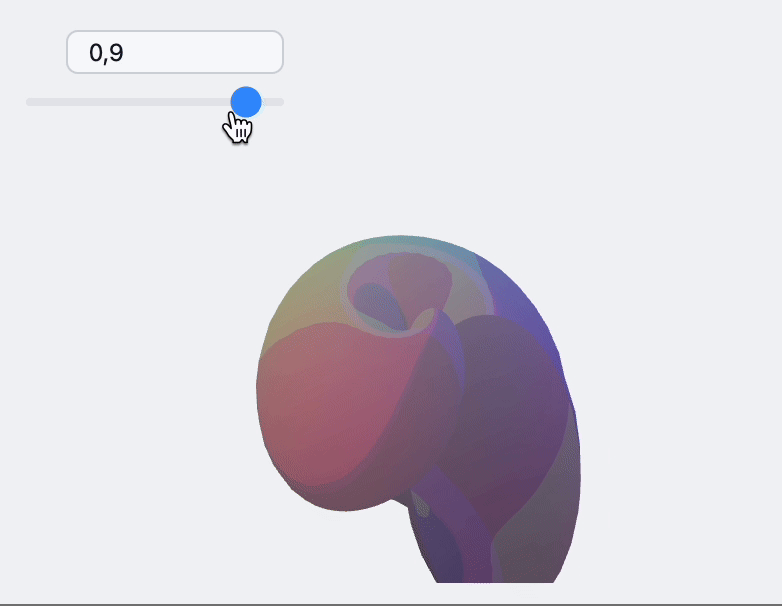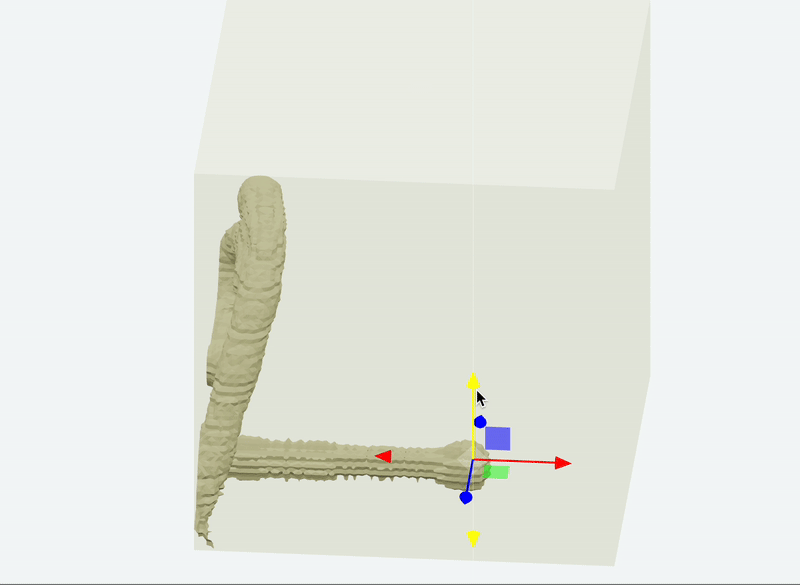GraphicsComplex
GraphicsComplex[data_List, primitives_, opts___]
represents an efficient graphics structure for drawing complex 3D objects (or 2D - see GraphicsComplex) storing vertices data in data variable. It replaces indexes found in primitives (can be nested) with a corresponding vertices and colors (if specified)
Most plotting functions such as ListPlot3D and others use this way showing 3D graphics.
The implementation of GraphicsComplex is based on a low-level THREE.js buffer position attribute directly written to a GPU memory.
Supported primitives
Line
No restrictions
v = PolyhedronData["Dodecahedron", "Vertices"] // N;
i = PolyhedronData["Dodecahedron", "FaceIndices"];
GraphicsComplex[v, {Black, Line[i]}] // Graphics3D
Polygon
Triangles works faster than quads or pentagons
GraphicsComplex[v, Polygon[i]] // Graphics3D
Non-indexed geometry
One can provide only the ranges for the triangles to be rendered
GraphicsComplex[v, Polygon[1, Length[v]]] // Graphics3D
it assumes you are using triangles
Point
Sphere
Tube
Options
"VertexColors"
Defines sets of colors used for shading vertices
"VertexColors" is a plain list which must have the following form
"VertexColors" ->{{r1,g1,b1}, {r2,g2,b2}, ...}
Supports updates
"VertexNormals"
Defines sets of normals used for shading
Supports updates
"VertexFence"
Defaults to False. When enabled, it sets an update barrier for all dependent primitives, ensuring they update their data only after the vertex data has been updated.
This helps prevent desynchronization issues where the vertex buffer updates lag behind polygon or line indices (or vice versa), which can lead to visual artifacts and WebGL buffer errors.
Dynamic updates
Basic fixed indexes
It does support updates for vertices data and colors. Use Offload wrapper.
(* generate mesh *)
proc = HardcorePointProcess[50, 0.5, 2];
reg = Rectangle[{-10, -10}, {10, 10}];
samples = RandomPointConfiguration[proc, reg]["Points"];
(* triangulate *)
Needs["ComputationalGeometry`"];
triangles2[points_] := Module[{tr, triples},
tr = DelaunayTriangulation[points];
triples = Flatten[Function[{v, list},
Switch[Length[list],
(* account for nodes with connectivity 2 or less *)
1, {},
2, {Flatten[{v, list}]},
_, {v, ##} & @@@ Partition[list, 2, 1, {1, 1}]
]
] @@@ tr, 1];
Cases[GatherBy[triples, Sort], a_ /; Length[a] == 3 :> a[[1]]]]
triangles = triangles2[samples];
(* sample function *)
f[p_, {x_,y_,z_}] := z Exp[-(*FB[*)(((*SpB[*)Power[Norm[p - {x,y}](*|*),(*|*)2](*]SpB*))(*,*)/(*,*)(2.))(*]FB*)]
(* initial data *)
probe = {#[[1]], #[[2]], f[#, {10, 0, 0}]} &/@ samples // Chop;
colors = With[{mm = MinMax[probe[[All,3]]]},
(Blend[{{mm[[1]], Blue}, {mm[[2]], Red}}, #[[3]]] )&/@ probe /. {RGBColor -> List} // Chop];
Graphics3D[{
GraphicsComplex[probe // Offload, {Polygon[triangles]}, "VertexColors"->Offload[colors]],
EventHandler[Sphere[{0,0,0}, 0.1], {"transform"->Function[data, With[{pos = data["position"]},
probe = {#[[1]], #[[2]], f[#, pos]} &/@ samples // Chop;
colors = With[{mm = MinMax[probe[[All,3]]]},
(Blend[{{mm[[1]], Blue}, {mm[[2]], Red}}, #[[3]]] )&/@ probe /. {RGBColor -> List} // Chop];
]]}]
}]
The result is interactive 3D plot

Or the variation of it, if we add a point light source
light = {0,0,0};
Graphics3D[{
GraphicsComplex[probe // Offload, {Polygon[triangles]}],
PointLight[Red, light // Offload],
EventHandler[Sphere[{0,0,0}, 0.1], {"transform"->Function[data, With[{pos = data["position"]},
probe = {#[[1]], #[[2]], f[#, pos]} &/@ samples // Chop;
light = pos;
]]}]
}]

Update indexes and vertices
For more complicated example you can update both. Here is an example with dynamic adapter for ParametericPlot3D
define shapes
sample[t_] := With[{
complex = ParametricPlot3D[
(1 - t) * {
(2 + Cos[v]) * Cos[u],
(2 + Cos[v]) * Sin[u],
Sin[v]
} + t * {
1.16^v * Cos[v] * (1 + Cos[u]),
-1.16^v * Sin[v] * (1 + Cos[u]),
-2 * 1.16^v * (1 + Sin[u]) + 1.0
},
{u, 0, 2\[Pi]},
{v, -\[Pi], \[Pi]},
MaxRecursion -> 2,
Mesh -> None
][[1, 1]]
},
{
complex[[1]],
Cases[complex[[2]], _Polygon, 6] // First // First,
complex[[3, 2]]
}
]
now construct the scene
LeakyModule[{
vertices, normals, indices
},
{
EventHandler[InputRange[0,1,0.1,0], Function[value,
With[{res = sample[value]},
normals = res[[3]];
indices = res[[2]];
vertices = res[[1]];
];
]],
{vertices, indices, normals} = sample[0];
Graphics3D[{
MeshMaterial[MeshToonMaterial[]], Gray,
SpotLight[Red, 5 {1,1,1}], SpotLight[Blue, 5 {-1,-1,1}],
SpotLight[Green, 5 {1,-1,1}],
PointLight[Magenta, {10,10,10}],
GraphicsComplex[vertices // Offload, {
Polygon[indices // Offload]
}, VertexNormals->Offload[normals]]
}, Lighting->None]
} // Column // Panel
]

Non-indexed
This is a another mode of working with Non-indexed geometry in Polygon. The benefit of this approach, you can use fixed length buffer for vertices and limit your drawing range using two arguments of Polygon.
Use non-indexed geometry if your polygon count reaches 1 million.
Paint 3D

Marching Cubes examples
